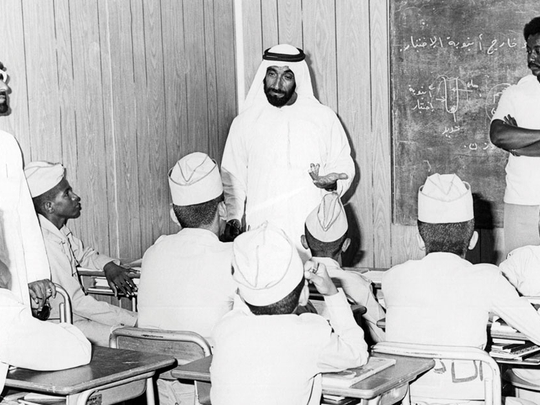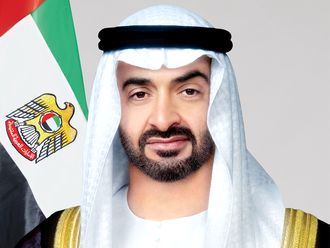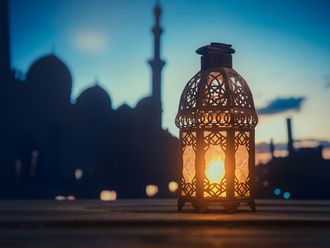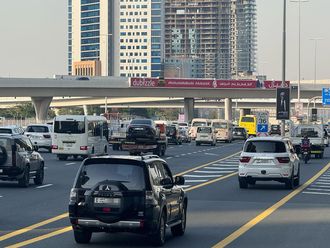
ABU DHABI: At the heart of the UAE’s spectacular achievements that allowed the nation to assume a position of pre-eminence regionally and internationally lies the vision of one man — Shaikh Zayed Bin Sultan Al Nahyan.
Shaikh Zayed, the UAE’s Founding Father, relied on his grand vision, wisdom and unflinching hard work in building a thriving and vibrant nation — a task which came with many challenges given a highly unstable regional environment.
Shaikh Zayed’s vision and untiring efforts took the UAE from being a sparsely populated desert settlement to a nation with dizzying records of achievements and prosperity, enabling the UAE to become among the most dynamic countries in the world in a record time.
Throughout his tenure, Shaikh Zayed exemplified the principle of beating the odds. He showed how it is possible to dream big and achieve the impossible.
Gulf News talks to prominent Emiratis on what were the kind of odds that Shaikh Zayed beat.
Zayed created a union against all odds
Zaki Nussaibah | State Minister
“The remarkable feat of the federation was achieved in a highly unstable regional environment. And how a visionary leader once described as “dreaming and [unable to] tell the difference between fantasy and reality’’ and the country whose formation (in 1971) appeared to the world as “the launching of a wealthy but militarily defenceless and politically underdeveloped mini-state into a sea of troubles whose survival could be seen as an exercise in long odds’’ emerged successful is an amazing story.
- Zaki Nussaibah | Minister of State
“When London announced that British forces would leave the Gulf by 1971, Shaikh Zayed spearheaded a plan to unite the nine major emirates that fell under British suzerainty. In the event, Bahrain and Qatar went their separate ways, but Shaikh Zayed managed to unite the seven remaining emirates.
“The 1968-1971 period was probably one of the most difficult in Shaikh Zayed’s distinguished career, as he cajoled, persuaded, forgave and promoted the creation of a federation that became the UAE on December 2, 1971. Shaikh Zayed was saddened to hear experts doubting the nascent country’s survival beyond a few months or years. Few thought that this experiment would succeed, allegedly because internal and regional rivalries were so acute that they would tear the nascent state apart.
“With the British announcement in 1968 of their plans to withdraw from the Gulf by 1971, Shaikh Zayed became the union’s most forceful voice in Arab and international media.
“His message, widely reported in the Arab and international press, was confident and optimistic, notwithstanding his country’s lack of the most rudimentary prerequisites of a modern state.
“In hindsight, not only has the federation survived and prospered, it also attained heretofore unheard of levels of stability and prosperity, in large part due to Shaikh Zayed’s policies.”
A beacon of peace at home and in the region
Dr Yousuf Al Hassan | veteran Emirati diplomat, writer and thinker
“Shaikh Zayed, however, worked diligently to settle emerging tribal disputes and differences. His wisdom came to the fore during talks and negotiations to settle disputes over the border area of Al Buraimi near Oman. As a result of his foresight, Zayed won the respect of all sides.
“In 1974, Shaikh Zayed decided to resolve a border dispute with Qatar and Saudi Arabia. The dispute over territory along the coast between Qatar and Saudi Arabia and Buraimi oasis area was resolved after the UAE made a trade-off that gave Saudi Arabia a 25km corridor on the Gulf called Khor Al Udaid along the coastline between Qatar and the UAE in return for Saudi willingness to give up its claims to the Buraimi oasis and territory in the area of what has become the city of Al Ain.
“Shaikh Zayed was a model of the spirit of Arab solidarity, believing that cooperation and joint Arab action is the way to build an Arab bloc that serves Arab people, defends Arab rights and promotes Arab affairs in international forums.
“History has recorded many initiatives by the founding leader from the support of Egypt and Syria in the October 1973 war, the cutting off of petroleum from the countries that supported Israel, the Arab reconciliation initiatives and the resolution of disputes between Egypt and Libya, between the warring parties in Lebanon, between Morocco and Algeria, between North and South Yemen, between Iraq and Iran in the 1980s, and in Somalia and elsewhere.
“Shaikh Zayed was a man of conciliation.
“He also succeeded in building respectful relations with the international community, away from polarisation during the Cold War.
“Foreign challenges included border problems with neighbours, gaining international recognition of the emerging union, building a good reputation, and presenting the UAE as a modern state that benefits its territory and international security and peace.”
Zayed transformed desert into green haven
Dr Hamdan Al Darei | Emirati researcher and author
"Shaikh Zayed’s major achievement, which is second to none, is agriculture and his amazing achievement in transforming this challenging environment into an attractive one.
“In 1969, Shaikh Zayed established the emirate’s first forest in Madinat Zayed in the Western Region. The total area of forestry, agriculture and landscaping and amenity plantation reaching nearly 749,869 donums.
“Shaikh Zayed was also alerted to the vital role of science in advancing his vision of growing crops and vegetables in the emirates. No wonder that he started the first agricultural experiment station in 1969 on Saadiyat Island.
“Thanks to Shaikh Zayed’s vision, the UAE is home to more than 40 million date palm trees and has the largest date processing business in the world, Al Foah Company, with an annual production of close to 113,000 metric tonnes.
“Shaikh Zayed also cultivated the coast of Abu Dhabi. Currently, the Mangrove National Park has 19 square kilometres of forest, and it is home to around 60 bird species.
“One of the most visible and enduring results of Shaikh Zayed’s efforts can be seen on both sides of the road between Abu Dhabi and Al Ain. A tree-planting project that began in the 1960s continues to prosper even today, with more than 100 million trees currently existing within the UAE borders.
“Al Ain alone has more than 75 modern forests, each with an average area between two to three square kilometres. The variety of trees planted were chosen carefully and assessed for their ability to survive in the harsh summer climate, with greater emphasis on local breeds.
“It is no wonder Al Ain is known as the ‘Garden City’ of the UAE.”Along with protecting the land, Shaikh Zayed shouldered the responsibility of building nature reserves and conserving wildlife. Often commended as his greatest achievement in this regard, Sir Bani Yas Island is a haven for endangered species such as gazelles.
Under his directives, breeding programmes in Al Ain Zoo helped increase the number of the Arabian oryx from four in the 1960s to its present number of several thousands. Such programmes were also extended to birds such as falcons and the Asian Houbara bustard.
The man of major reforms and development
Najeeb Al Shamsi | an advisor at the Abu Dhabi Chamber of Commerce and Industry
“For almost four decades, the bright ruler painstakingly invested in the UAE, which witnessed the creation of major institutions, ranging from ministries of finance, planning, defence, communications, internal and foreign affairs, as well as health, education and the judiciary.
“Shaikh Zayed financed the large-scale construction of public housing facilities, schools and hospitals across the country.
“The capital city’s airport, which was little more than a dirt strip, was upgraded into an international facility, along with a modern seaport, highways, roads and bridges linking the island to the mainland. The end result was an advanced country [that is the UAE today].
“Inspired by its founding father, Emirati officials in Dubai, Sharjah, Ras Al Khaimah, Ajman, Umm Al Quwain and Fujairah all embarked on grand economic schemes that changed the face of the country.
“‘Shaikh Zayed said: ‘I always thought before I had the possibilities’.
“‘With the advent of oil, our people have been deprived of services and facilities in the past’,” he said on another occasion. ‘But I was sure that dreams would one day be realised’.”
“It is the suffering of the human condition that made Shaikh Zayed and his deep concern to provide appropriate capabilities for the people of the UAE, and compensate them for the harsh circumstances and difficult life.
Shaikh Zayed was a man in a hurry, anxious to introduce fundamental reforms to his nation-state, willing to pay any price and assume any burden as long as these advanced the status and condition of the average Emirati. Unlike many who also possessed wealth, Shaikh Zayed lived a relatively modest life, always attuned to his basic traditions and values.
“At ease in his beloved desert, Shaikh Zayed would spend many hours contemplating sunsets over the horizon, comfortable in a familiar environment that nurtured and sustained him.”











